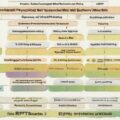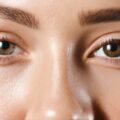Humans are inherently social creatures. From the moment we are born, we begin forming bonds and relationships that shape both our development and our perceptions of the world around us. This interdependence is captured in Urie Bronfenbrenner’s social ecology model of human development.
Understanding Our Influence Circles
Bronfenbrenner envisioned our lives as made up of concentric circles of influence. The people and environments closest to us (our families, friends, neighborhoods, schools) make up our microsystems. Interactions between these microsystems form our mesosystems. Exosystems are the larger social settings that impact our microsystems indirectly, like government policies or mass media. Finally, macrosystems are the cultural values, laws, and customs that shape society.
Fostering Healthy Development
Research shows that having strong, positive relationships across these influence circles leads to better health, happiness, and life outcomes. Close caring bonds build resilience. Broader social connections create a sense of meaning and belonging. By supporting those around us, we uplift our communities as a whole.
Creating Positive Change
The social ecology model demonstrates how each of us has a role to play in making our families, peer groups, neighborhoods, and wider society healthier places to live. Small acts of compassion and courage ripple out across our circles of influence. By standing up for justice, practicing empathy, and creating spaces for authentic human connection, we can shift the cultural values that shape our shared reality.
Frequently Asked Questions
What are the main elements of Bronfenbrenner’s model?
The main elements are microsystems, mesosystems, exosystems, and macrosystems. Microsystems are our immediate relationships and environments. Mesosystems are connections between microsystems. Exosystems are external settings that impact our microsystems. Macrosystems are overarching cultural values and norms.
How can this theory be applied in real life?
By recognizing our interconnectedness and seeking to foster healthy development across all levels of influence. For example, parents can create nurturing home environments, advocacy groups can promote supportive public policies, and cultural leaders can shift societal attitudes.
How do strong relationships contribute to wellbeing?
Close caring relationships build resilience by providing love and support during difficult times. Broader social connections create a sense of meaning and purpose by helping us feel part of something bigger than ourselves.
What are some everyday ways we can create positive change?
Standing up to bullying and discrimination, having open and thoughtful conversations, volunteering in our communities, practicing small acts of kindness toward strangers – these are just a few impactful ways we can positively influence our circles.
Why is this theory still relevant today?
It emphasizes our interconnectedness at a time of so much division. It inspires community action and social change from the ground up. And it offers hope – by shifting our microsystems, we have the power to transform society.









